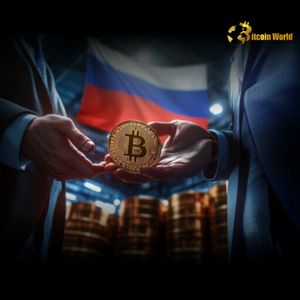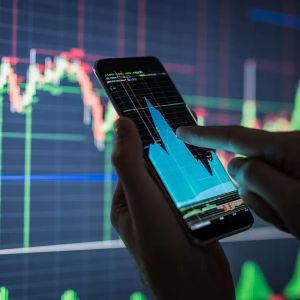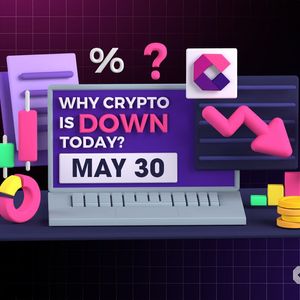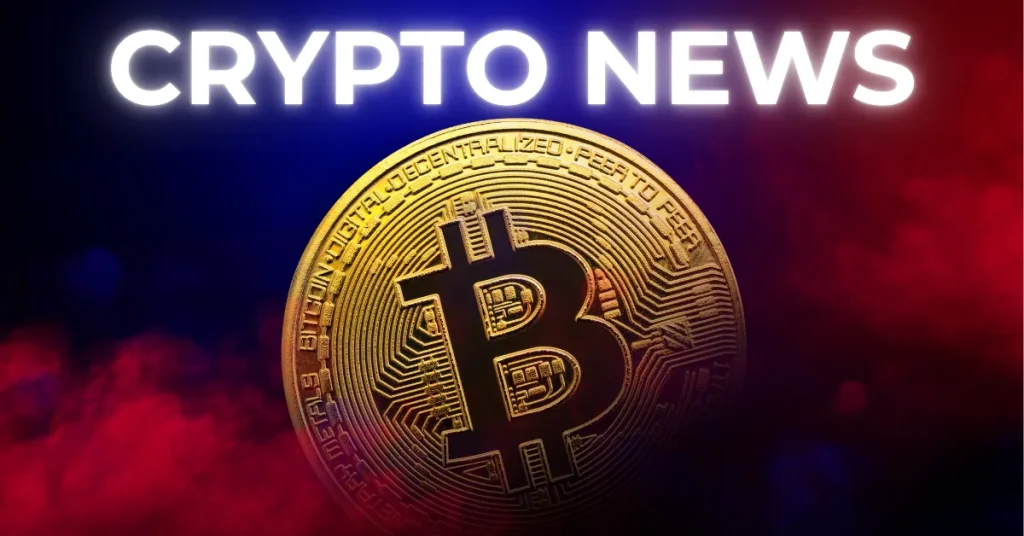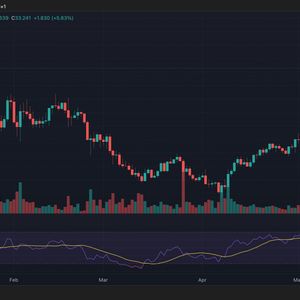BitcoinWorld Russia Crypto Regulation: Significant Breakthrough for Digital Asset Derivatives Trading Big news out of Russia! The financial landscape there is seeing a notable shift regarding cryptocurrencies, specifically concerning how institutions can interact with digital assets. If you’re following the world of crypto and regulation, especially in major global economies, this development from the Bank of Russia is definitely worth paying attention to. What Does the Bank of Russia’s Decision Mean for Crypto? According to recent reports, the Bank of Russia, the nation’s central bank, has given a green light for financial institutions within the country to offer certain types of products linked to cryptocurrency prices. This isn’t a full embrace of spot crypto trading for everyone, but it’s a significant step. Specifically, institutions can now provide derivative instruments and securities that reference the price of digital financial assets (DFAs), which often include cryptocurrencies. Think of it this way: instead of directly buying or selling Bitcoin or Ether, financial players can now offer tools that allow investors to bet on or hedge against the price movements of these digital assets. This is a common practice in traditional finance for assets like stocks, commodities, or currencies, and bringing it into the digital asset space, under a regulated framework, marks a progression in Russia crypto regulation . However, there’s a crucial caveat here: these services are strictly for a specific group – entitled or qualified investors crypto . This isn’t something the average retail investor in Russia will have access to through these new regulated channels. Also, importantly, these derivative contracts will not support settlement in actual cryptocurrencies. This means if a contract expires, the payout will be in traditional currency, not the underlying digital asset. This condition reflects a cautious approach, separating the regulated financial product from direct ownership and transfer of cryptocurrencies themselves. Deep Dive into Digital Asset Derivatives in Russia So, what exactly are Digital asset derivatives in this context? A derivative is a financial contract whose value is derived from an underlying asset, in this case, the price of a digital asset like Bitcoin or Ethereum. Common examples include futures, options, and swaps. By allowing these, Russia is creating a regulated pathway for institutions and sophisticated investors to gain exposure to crypto price volatility without the complexities or regulatory uncertainties often associated with holding the actual digital assets. Let’s break down why derivatives are used: Hedging: Companies or investors with existing exposure to digital assets can use derivatives to protect themselves against adverse price movements. Speculation: Investors can speculate on whether the price of a digital asset will go up or down without needing to own the asset. Arbitrage: Profiting from small price differences of the same asset or derivative in different markets. The fact that settlement is not in crypto is a key feature distinguishing this from many global crypto derivative markets. This design choice by the Bank of Russia likely aims to contain potential systemic risks associated with volatile digital assets within the traditional financial system, while still allowing for price exposure. This move could potentially increase institutional interest in the digital asset space within Russia, providing regulated products that fit within their existing compliance frameworks. It acknowledges the growing importance of digital assets while maintaining a degree of control and limiting direct crypto market participation to a select group. Who are Qualified Investors Crypto in Russia? The restriction to qualified investors crypto is a standard regulatory practice seen in many jurisdictions when introducing complex or potentially high-risk financial products. The idea is that these investors are presumed to have the financial sophistication, knowledge, and resources to understand and bear the risks involved. While the specific criteria for a ‘qualified investor’ in Russia are defined by their financial regulations, they typically include categories such as: Large financial institutions (banks, investment firms, insurance companies) Wealthy individuals meeting certain asset or income thresholds Professional market participants By limiting access to this group, the Bank of Russia is essentially creating a controlled environment for this type of crypto-linked activity. This minimizes the risk of retail investors, who may have less experience or capital, being exposed to the potentially high leverage and volatility often associated with derivative trading. It’s a cautious step forward in Russia crypto regulation , prioritizing institutional and high-net-worth participation over broad public access for these specific products. Implications for Russia Crypto Regulation and the Market This decision by the Bank of Russia doesn’t happen in a vacuum. It’s part of an ongoing, often complex, conversation within Russia about how to regulate and interact with cryptocurrencies. For a long time, there have been debates between different government bodies, with some advocating for stricter bans and others seeing potential for innovation and economic benefit. Allowing Digital asset derivatives for qualified investors suggests a pragmatic approach is gaining traction. It indicates that Russian authorities recognize the existence and market interest in digital assets, and rather than outright banning all related activities, they are seeking ways to channel some of this interest into regulated, controllable frameworks. This could be a precursor to further developments in Russia crypto regulation , potentially paving the way for other types of regulated crypto-linked financial products in the future, or perhaps a gradual expansion of access. The move could also impact the broader market perception of digital assets within Russia, lending a degree of legitimacy by integrating them into the formal financial system, albeit in a limited capacity. It signals that digital assets are being taken seriously by financial regulators, not just as a fringe phenomenon but as an asset class that requires specific regulatory consideration. Opportunities and Challenges for Crypto Trading Russia For financial institutions in Russia and qualified investors crypto , this opens up new avenues for engagement with the digital asset market. It provides regulated tools that were previously unavailable or only accessible through less regulated, offshore platforms. This could lead to increased trading volume and liquidity within the regulated Russian financial system for these specific derivative products. Opportunities: New Products: Financial institutions can develop and offer innovative products tied to crypto prices. Risk Management: Qualified investors can use these tools for hedging existing crypto exposure. Increased Legitimacy: Trading within a regulated framework adds a layer of security and trust. Market Development: Fosters the growth of a regulated digital asset ecosystem in Russia. However, challenges remain. The restriction to qualified investors crypto means the vast majority of the population still doesn’t have access to these specific regulated products. The lack of physical settlement in crypto also limits the utility for those who might want to use derivatives as a way to eventually acquire or deliver digital assets. Furthermore, the underlying volatility of cryptocurrencies still poses significant risks, even within a regulated derivative framework. Challenges: Limited Access: Only available to qualified investors, excluding the retail market. No Physical Settlement: Payouts are in fiat, not actual crypto. Market Volatility: Derivatives can amplify gains and losses in volatile markets. Regulatory Nuances: Navigating the specifics of the new regulations requires expertise. Overall, while a positive step for institutional participation and the evolution of Russia crypto regulation , it’s not a green light for widespread Crypto trading Russia for everyone. It’s a carefully controlled experiment by the Bank of Russia . Actionable Insights For financial institutions in Russia, understanding the specific requirements and compliance frameworks for offering Digital asset derivatives to qualified investors crypto is paramount. This involves developing the necessary infrastructure, risk management systems, and legal expertise. For qualified investors, this presents a new opportunity to access crypto price exposure through regulated channels. It’s crucial to perform thorough due diligence on the financial products offered and understand the risks inherent in derivative trading and the underlying digital asset markets. Don’t assume regulation eliminates risk; it primarily aims to ensure fair practices and financial stability. For the global crypto community watching Russia crypto regulation , this move is a signal that even countries with historically cautious or restrictive stances are finding ways to integrate digital assets into their financial systems, albeit on their own terms and with significant limitations compared to more open markets. Conclusion The decision by the Bank of Russia to permit regulated Digital asset derivatives trading for qualified investors crypto marks a significant, albeit cautious, evolution in Russia crypto regulation . While it doesn’t open the floodgates for widespread Crypto trading Russia for the general public, it provides a regulated pathway for institutional participation and sophisticated investors to engage with the digital asset market through price-referenced financial instruments. The restriction to qualified investors and the absence of physical crypto settlement highlight a strategy focused on controlled integration and risk management. This development is a key indicator of how major economies are grappling with the integration of digital assets into traditional finance and sets a precedent for future regulatory actions in the country. To learn more about the latest crypto market trends, explore our article on key developments shaping digital asset price action. This post Russia Crypto Regulation: Significant Breakthrough for Digital Asset Derivatives Trading first appeared on BitcoinWorld and is written by Editorial Team



